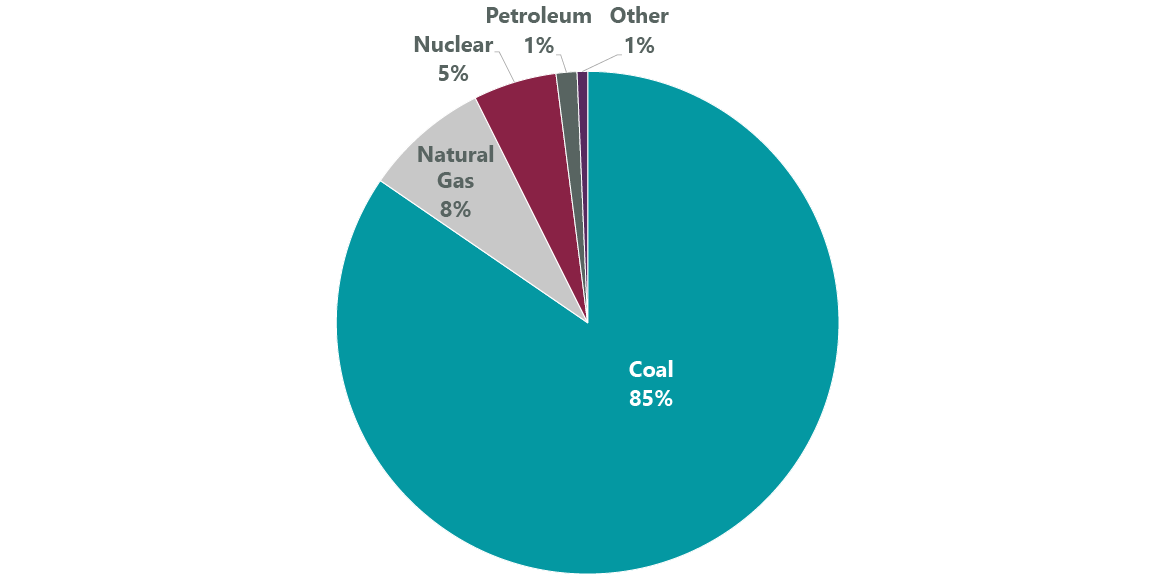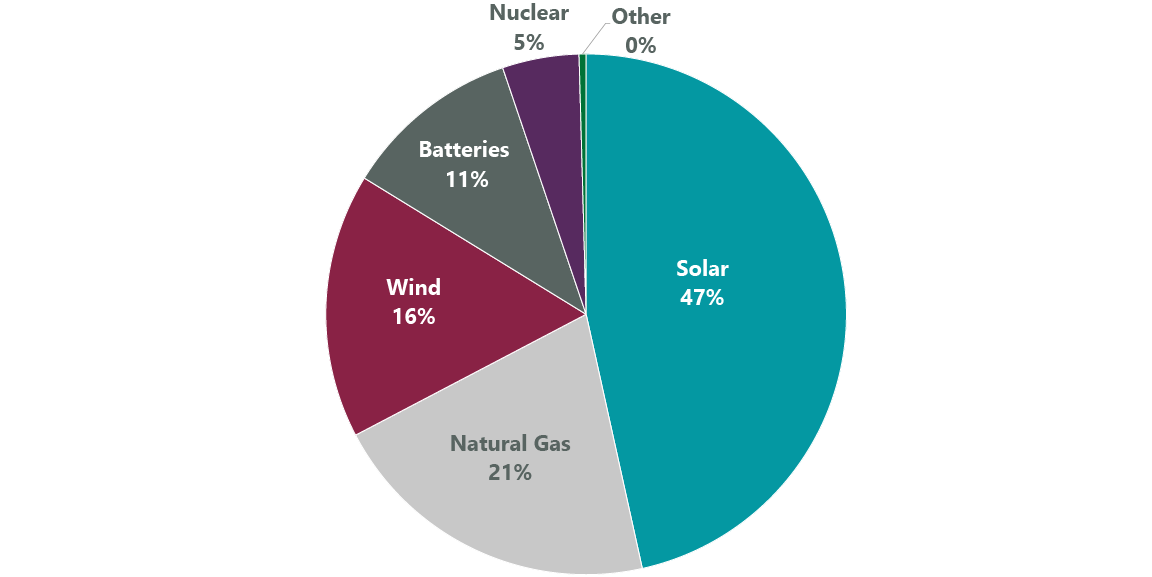Khanchit Khirisutchalual
Analyst-Led Engagements Uncover Value
Environmental, social and governance (ESG) investing has made much progress over the last two decades. Investors in public equities and corporations have taken more ownership of the impact they can have mitigating climate change and making progress on social goals such as diversity, equity and inclusion; ESG data and investment products have proliferated; and ESG assets under management have continued to grow, with most continuing to be actively managed.
Amid such growth has come scrutiny over potential differences between the claims and realities of ESG investing. This has come on the part of regulators, asset owners and increasingly in the public eye, among business and government leaders.
In this environment we think it worthwhile to highlight the value added by ClearBridge engagements and their role in our investment process and stewardship activities. We have made steady improvements and progress in our process, marked by several milestone years, from 2005, when we established a central research platform that began integrating ESG factors by sectors, to 2012, when we explicitly incorporated ESG analysis in analyst compensation and performance reviews, to 2014 when we formally introduced proprietary ESG ratings, which capture company-specific drivers of risk and return related to sustainability. Currently, 100% of our actively owned companies have an ESG rating assigned.
A key through-line in our history of ESG integration, and a key point of differentiation, is that it is carried out by our analysts: we think there is immense value in having the same person responsible for covering a company’s fundamentals and its ESG characteristics. Company engagements, therefore, are likewise led by ClearBridge sector and portfolio analysts, an approach that we believe gives them insights that might not be top of mind for other investors and a fundamental edge, gained through long-term discussions with CEOs and CFOs of portfolio holdings. ClearBridge’s analyst- and portfolio manager-led engagements offer value, driving positive change and contributing to a fundamental edge for our investment process.
Transforming Climate Risks to Opportunities
In many cases, ClearBridge engagements have specific objectives, such as encouraging the retirement of fossil fuels and increasing use of renewables. Such has been the case with electric power company AES (AES), with whose executives and board members we have been engaging for several years on the company’s path to reduce its carbon footprint. We believe our voice, as a top shareholder, has been a valuable addition to AES’s decision making along this path, and our engagements have helped us identify where climate-related risks in a company’s operations could be climate-related opportunities.
Several years ago, we began discussing with AES the lack of terminal value from coal (Exhibit 1), and we expressed how coal-related ESG concerns were weighing on AES’s valuation multiple, as the ESG risk premium was rising. We helped convince AES to stop investing in coal plants and start shutting down existing coal capacity. The next step was to add renewable energy exposure in the form of wind, solar and industrial scale battery storage (Exhibit 2), in line with U.N. Sustainable Development Goal (SDG) 7: Affordable and Clean Energy (we discuss how an investment framework may further the SDGs in our 2022 Stewardship Report). We shared our belief that any lost near-term operating earnings would be made up with a higher valuation multiple.
Exhibit 1: Planned U.S. Utility-Scale Electric Generating Capacity Retirements 2022 (14.9 GW Total)

As of Jan. 11, 2022. Source: U.S. Energy Information Administration.
Exhibit 2: Planned U.S. Utility-Scale Electric Generating Capacity Additions 2022 (46.1 GW Total)

As of Jan. 11, 2022. Source: U.S. Energy Information Administration.
As our discussions have progressed, AES has been increasingly aggressive in reducing its carbon intensity by lowering coal capacity and investing in renewable energy, as evidenced by its declining GHG emissions. As we had anticipated, AES’s valuation multiple recovered as its product mix shifted from coal to renewables.
ClearBridge encourages companies to align their net-zero goals with the Science Based Targets Initiative’s (SBTi) standards, which clearly define pathways for companies to reduce carbon emissions in line with the Paris Agreement goals. In April 2022 we met with AES Investor Relations and its General Counsel to discuss setting science-based targets as the latest step in this path, and in line with SDG 13: Climate Action. At the meeting, AES confirmed it is exiting coal in 2025. The company continues to develop as a leader in renewable energy, in June 2022 announcing the formation with other leading U.S. solar companies of the U.S. Solar Buyer Consortium, which will invest more than $6 billion in solar panels to scale up domestic solar manufacturing.
Grasping Realities Behind Net-Zero Targets
Environmental impact is a major issue for the transportation industry, including logistics and freight companies such as United Parcel Service (UPS). Recent engagements with the company have given us a better understanding of the challenges in lowering emissions in transport as well as where innovations may be coming from in the years ahead. In ESG-focused engagements in March and May 2022, we discussed UPS’s path to net-zero using science-based targets.
Though it has a 2050 net-zero goal in line with SBTi, UPS has issues complying with SBTi standards because aviation constitutes 60% of UPS’s Scope 1 and 2 emissions. This is an area over which UPS has little control, however, and the maximum exclusion for a source of emissions for SBTi approval is 5%. UPS has committed to a 2050 carbon neutral goal, which is the same as the SBTi’s goal, although UPS takes a different view of the first 15 years of the path, finding existing technology unable to warrant as aggressive a path as SBTi’s.
Over the course of our engagements, we discussed the technical challenges facing the logistics and freight industry and the state of several key technological developments that will be crucial to helping the industry continue to lower emissions. For example, UPS is looking to sustainable aviation fuels, which are biofuels used to power aircraft with a smaller carbon footprint than jet fuel; however, planting to create the enormous amount of feedstock required to replace crude oil is not sustainable. Electric aircrafts are another potential solution, and UPS will have the first of 10 electric aircraft by Beta Technologies delivered by 2024, with an option for 1,400 more. While these planes help time-sensitive health care deliveries and benefit small and medium-size businesses, they have a range limited to 250 nautical miles. A more sustainable path, particularly for long-range transportation, could be the use of hydrogen, but the technology and infrastructure is in nascent stages of development and largely out of UPS’s control. We have encouraged the company, however, to increase pressure on its suppliers to accelerate the development of these technologies. ClearBridge also has ongoing active discussions with aerospace manufacturers on these issues.
Connecting Governance and Long-term Shareholder Value
In addition to finding value in engaging on climate risks, net-zero targets and new technologies, we also add value to our investment process with engagements on a variety of governance topics. For example, we have long supported toy and game maker Hasbro’s (HAS) management and board on strategic, operational and ESG-related topics; the company ranks highly on almost all areas of ESG evaluation, including diversity at board and all-employee levels. We maintain long-term relationships with Hasbro management, and in April 2022, after an activist shareholder started pushing for strategic change at the company, we stepped up our dialogue with senior management and the board.
While we appreciate some of the concerns raised by the activist, we were against most of its suggestions, which we believed would be destructive to long-term shareholder value. We did not believe it was in our best interest to replace three board members with activist-nominated board members — the existing board is replete with talent from the media, technology, content, gaming, entertainment and social media industries.
Over multiple meetings with Hasbro’s CEO and CFO and as many as three board members, our strong relationships helped us better understand what changes would be made where appropriate, and what strategies would remain intact. We had frequent opportunity to share our thoughts on board composition, long-term strategic priorities, compensation, capital allocation and disclosures. All of these became import topics for review during this time. In June 2022 the activist’s proposals were rejected by shareholders. We remain in support of management as it continues on its path of brand-building and growing digital content for its customers.
Advancing a Smart Farm Future
In our engagements with farm equipment maker Deere (DE), we have followed new technology as it has developed from early promise of environmental and social benefits to market reality. In March 2022, Deere’s Chairman & CEO and CFO met with ClearBridge’s investment team in our New York offices. While prior to the pandemic we had regularly hosted the company, this meeting was among the most interesting as the relatively new CEO outlined a bold plan that placed improved environmental stewardship squarely at the center of the company’s future.
Industrial farming, at its core, is not an especially environmentally friendly enterprise. Agronomic practices have improved over time, but fertilizer, herbicide and pesticide applications and water usage remain problematic. Deere believes its precision farming technology can drive down chemical and fertilizer volumes materially —possibly by as much as 70% — as sensors and cameras attached to tractors, sprayers and combines help determine the exact level of chemicals that might be required. This more precise methodology is expected to: 1) improve crop yields; 2) reduce farmer input costs; and 3) improve overall land management capabilities. Farmers will make more money and grow more food to support global populations while at the same time better caring for the soil. There are also substantial environmentally positive knock-on effects, because fertilizers largely are either carbon-based or mined.
There are also social benefits to Deere’s precision farming, such as increasing access to cost savings for smaller, non-commercial or family farms, and the contribution of improved crop yields toward SDG 2: Zero Hunger. This is in addition to its benefits for SDG 15: Life on Land through promoting sustainable use of terrestrial ecosystems. Deere’s technological strength also includes bringing connectivity to farmers in emerging markets, for example improving Wi-Fi access for farmers in Brazil.
New equipment pricing has moved much higher recently as Deere upgrades its offerings to support this effort. That said, the company has introduced substantial aftermarket packages so farmers using older equipment, who may not be able to afford completely new items, benefit from this technology.
Lastly, we discussed a timeline for transitioning large farm equipment away from diesel to an alternative fuel. At present, however, there is no viable alternative that has the power requirements necessary to drive a tractor for an hour, much less a full day, making any such transition a more distant opportunity.
Overall, we had been waiting to have this discussion for several years, and we were pleased the company’s technologies finally appear to have caught up to precision farming’s initial promise.
Editor’s Note: The summary bullets for this article were chosen by Seeking Alpha editors.


Be the first to comment